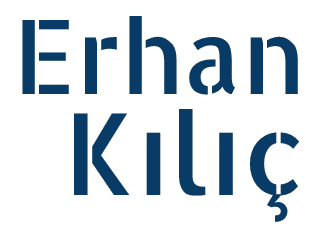Data Types in Computer Science and Programming
In the world of computer science, data is at the heart of every computation. Data comes in various forms, and to effectively work with it, computer scientists and programmers use data types. Data types define the nature of data, specifying what values can be stored and what operations can be performed on them. Understanding data types is fundamental to writing efficient and error-free code. In this article, you will explore all the essential data types in computer science.
What are Data Types?
Data types, also known as data structures, are a crucial concept in computer science and programming. They categorize data into specific types based on their characteristics. Data types determine the operations that can be performed on the data and the amount of memory required to store it. In most programming languages, data types can be broadly categorized into two main groups: primitive data types and composite data types.
Primitive Data Types
Primitive data types are the basic building blocks of data in programming languages. They are often directly supported by the hardware and are highly efficient. The most common primitive data types include:
1. Integer (int)
Integers represent whole numbers, both positive and negative, without any decimal or fractional part. They are used for counting, indexing, and performing arithmetic operations.
Example (in Python):
x = 42
2. Floating-Point (float)
Floating-point numbers, or floats, are used to represent real numbers with decimal or fractional parts. They are essential for scientific and engineering calculations.
Example (in Python):
pi = 3.14159
3. Character (char)
Characters are used to represent individual characters, letters, or symbols in a text. In some programming languages, characters are enclosed in single quotes (‘a’).
Example (in C):
char grade = 'A';
4. Boolean (bool)
Boolean data types can have only two values: `True` or `False`. They are often used for conditional statements and logical operations.
Example (in Python):
is_valid = True
5. Byte
A byte is the smallest unit of data and can store a single character or a small integer. It is often used in low-level programming and file handling.
Example (in Java):
byte b = 8;
Composite Data Types
Composite data types are used to group multiple values of different or the same data types into a single unit. They are particularly useful for organizing and managing complex data. The most common composite data types include:
6. Array
An array is a collection of elements of the same data type, stored in contiguous memory locations. It allows for efficient storage and retrieval of data.
Example (in Python):
numbers = [1, 2, 3, 4, 5]
7. String
Strings are sequences of characters and are widely used for working with text. They can be represented as arrays of characters in some programming languages.
Example (in JavaScript):
var greeting = "Hello, World!";
8. Structure (struct) and Class
Structures and classes are used for creating user-defined data types. They can contain a combination of primitive and composite data types, making them powerful for modeling complex entities.
Example (in C++):
struct Person {
std::string name;
int age;
};
9. List
Lists are dynamic data structures that can grow or shrink in size. They are versatile and often used for implementing data structures like linked lists and queues.
Example (in Python):
my_list = [1, 2, 3, 4, 5]
10. Dictionary (Map, Hash Map)
Dictionaries, also known as associative arrays or maps, store data in key-value pairs. They allow for efficient data retrieval based on keys.
Example (in Python):
student = {
"name": "Alice",
"age": 20,
"grade": "A"
}
11. Set
Sets are collections of unique elements. They are useful for tasks that require distinct values or checking membership.
Example (in Python):
unique_numbers = {1, 2, 3, 4, 5}
12. Enumerations (enum)
Enumerations are user-defined data types used to define a set of named constants. They provide readability and clarity to the code.
Example (in C#):
enum Days { Sunday, Monday, Tuesday, Wednesday, Thursday, Friday, Saturday };
Specialized Data Types
In addition to the primitive and composite data types mentioned above, some programming languages offer specialized data types for specific use cases:
13. DateTime
DateTime data types are used to store date and time information. They allow for operations like date arithmetic and formatting.
Example (in Java):
import java.util.Date; Date now = new Date();
14. Pointer
Pointers are used in low-level languages like C and C++ to store memory addresses. They enable direct memory manipulation and are crucial for systems programming.
Example (in C):
int* ptr; int x = 10; ptr = &x; // ptr now points to the memory location of x
15. Function and Delegate
Some languages allow functions to be treated as data types, allowing them to be passed as arguments or stored in variables. This is common in functional programming languages.
Example (in Python):
def square(x):
return x * x
my_function = square
Choosing the Right Data Type
Selecting the appropriate data type is a critical decision in programming. It affects the efficiency, correctness, and readability of your code. Here are some guidelines for choosing the right data type:
- Use Primitive Types When Possible: Primitive types are highly efficient, so use them for simple values like integers, floating-point numbers, and characters.
- Choose Composite Types for Complex Data: When dealing with structured or complex data, use composite types like arrays, structures, or classes to maintain organization and clarity.
- Dynamic Data Structures: For collections that need to grow or shrink dynamically, consider using dynamic data structures like lists or linked lists.
- Consider Memory Efficiency: Be mindful of memory usage, especially in resource-constrained environments. Choose the smallest data type that can represent your data accurately.
- Use Enumerations for Constants: When defining a set of constant values, use enumerations to improve code readability.
- Select Specialized Types for Special Cases: If your application involves date and time calculations, use DateTime types. For memory manipulation, use pointers in low-level languages.
- Think About the Future: Consider potential future requirements when selecting data types. Choosing flexible data types can make your code more adaptable to changes.
Conclusion
Data types are the foundation of computer science and programming. They provide structure and meaning to data, enabling computers to process and manipulate information. Whether you’re working with numbers, text, or complex data structures, understanding data types is essential for writing efficient and error-free code. By choosing the right data type for each task, you can create programs that are both powerful and maintainable, making you a more effective programmer in the ever-evolving world of computer science.

